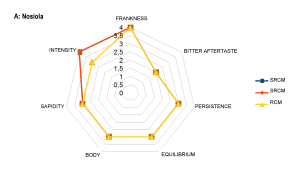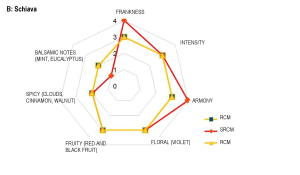NATURALIA NEWS
____
N°2 – July 2023
The practice of enrichment is governed at European level by Reg.(EU) No. 1308/2013, which provides for and regulates the possibility of adding concentrated grape must (MC), rectified concentrated grape must (MCR) or sucrose to musts and to wines to compensate for any lack of sugar content inthe grapes and increase their natural alcoholic strength by volume. In Italy, as well as in other countries of the Mediterranean area (Greece, Spain, Cyprus,Portugal and some French departments) enrichment is allowed by adding only concentrated grape must or rectified concentrated grape must.
Despite having a much higher purity than concentrated must, MCR in its traditional liquid form does not represent an optimal solution from the pointof view of stability, practicality of logistics and use and, above all, purity. The presence of water in the product makes it susceptible to microbial pollution and chemical degradation of the components. Furthermore, as the temperature decreases, the sugars tend to solidify forming a crystalline precipitate which requires a heat treatment to be brought back into solution before use.
These limits were overcome with the development of the Rectified Concentrated Must in crystalline form (MCRS), recognized and approved at national and European level (Reg. (EU) 1308/2013) for all oenological applications, under the same requirements and conditions of the Liquid MCR.
The crystalline form of the MCRS guarantees advantages related to the lower environmental impact of logistics (smaller volume transported), ease of use, stability (for solid state sugars thisis not foreseen – Reg. (EU) 1169/2011 – the obligation to indicate the Minimum Conservation Term) and, as evidenced by research carried out by the Edmund Mach foundation, to purity.
In this study, the analysis of the volatile compounds profile in different samples of liquid MCR and MCRS and in still wines (Müller Thurgau,Schiava, Trebbiano Toscano and Sangiovese varieties) enriched with liquid MCRand crystalline MCRS, revealed a clear difference between the two theses.
In fact, while the aromatic profile of the MCRS appears clean and free of volatile compounds, the liquid MCR is characterized by some “varietal” tracer compounds, present in the original grapes – such ascis and trans linalool furan oxides, rose oxide, vitispirans, TDN (1,1,6-trimethyl-1,2-dihydronaphthalene, which could give rise to negative notes, from hydrocarbon/kerosene) – and “process” compounds, products following the wort heating (e.g. acetylfuran, furfural and 5-methylfurfural).
These differences in the aromatic profile are manifested and confirmed in the sensory analysis of wines enriched with MCR or MCRS: in pairs of wines in which statistically significant differences are highlighted, those enriched with MCRS are generally preferred because they are judged to be finer and more elegant. The aromatic compounds present in the liquid MCR can infact alter the organoleptic profile of the finished product and in some cases can determine olfactory perceptions of sensory relevance, interfering with the final quality of the wines, especially in the case of high quality and DOC, DOCG and PGI wines.
Figure 1 shows two examples of sensory analysis performed on Nosiola and Schiava wines enriched with liquid MCR and MCRS. Nosiola wines enriched with MCRS are recognized as more intense and therefore preferred to those enriched with liquid MCR. Similarly, Schiava wines enriched with MCRS are fresher and more harmonious.


Figure 1: Examples of sensory evaluation that motivates the preference in the case of wines enriched with MCRS vs. MCR. A: Nosiola sensory analysis; B: Schiava sensory analysis.
